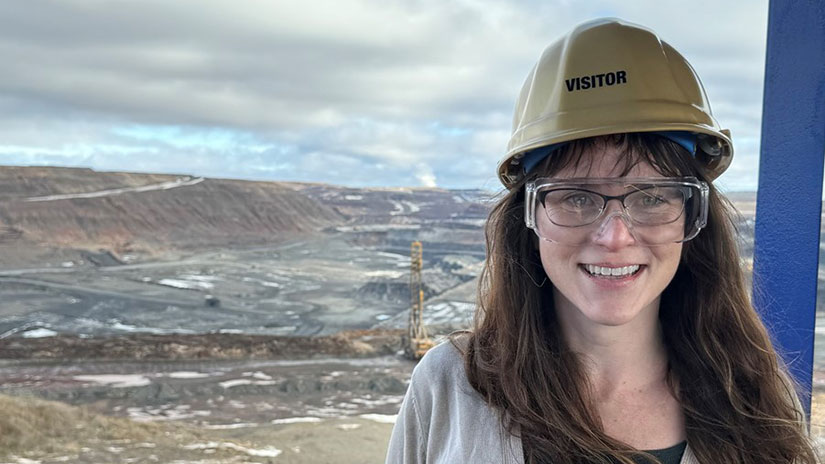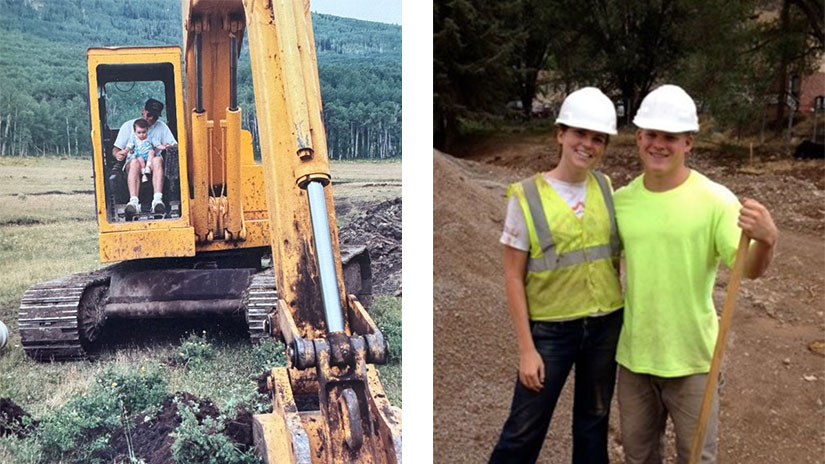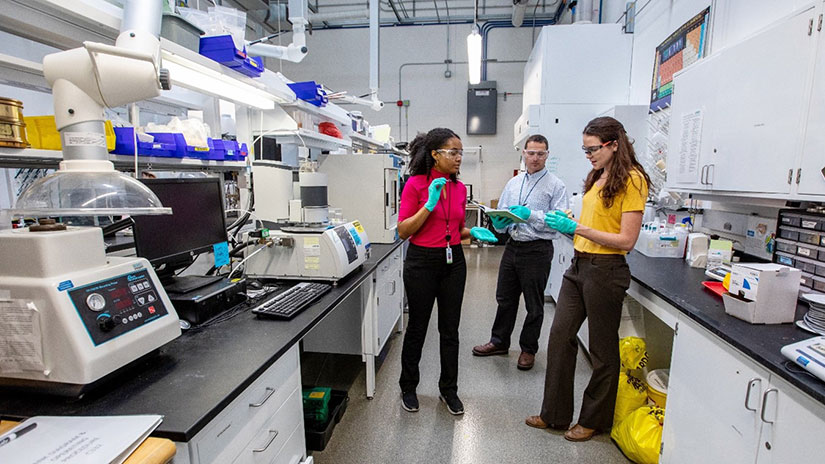Q&A With Kerry Rippy: Why You Should Be Optimistic About Industrial Carbon Emissions
And Other Answers From an Expert in Asking “Why?”
![Kerry Rippy overlain on a background of black-and-white manufacturing images and icons.]](https://www.nrel.gov/images/libraries/news/program/2024/20240221-q-a-kerry-rippy-fullwidth.jpg?Status=Master&sfvrsn=6c0e1a5b_0)
Kerry Rippy’s first word was not a common one, like mommy, dog, or banana. Even as a baby, she was not so interested in simply naming her favorite parent, pet, or sticky breakfast treat. She had bigger mysteries in mind.
From her first word, Rippy wanted to know: “Why?”
“I was always the kid who wanted to know more,” Rippy said.
At 3 years old, Rippy would stop to scrutinize the scrubby plants popping up through sidewalk cracks. It took her mom forever to walk anywhere with her little investigator. In fifth grade, Rippy’s teacher demonstrated how a rocket launches, and Rippy had questions—lots of questions. She remembers her teacher saying, “Wow. You won’t stop until I teach you trigonometry right now, will you?”
Today, Rippy is a researcher and subprogram lead in the Advanced Manufacturing Program at the National Renewable Energy Laboratory (NREL). And she is still asking questions. But now, she is finding her own answers.
For the moment, there is one big question that guides all her work: How can we reduce industrial emissions?
The U.S. industrial sector accounts for about 23% of the country’s total greenhouse gas emissions. If Rippy and her colleagues can help staunch those emissions, that would be a big win in the fight to slow climate change.
But industry is a sprawling labyrinth of iron and steel, cement and concrete, chemicals, mining operations, food and beverages, manufacturing, and more. Each demands a steady influx of raw materials and energy. And each requires a different strategy to reduce their emissions.
Or do they?

“I wouldn’t say it’s just chipping away at one corner at a time,” Rippy said. “Because the sector is so big and multifaceted, there are so many opportunities that are cross-cutting.”
For example, steel is the world’s top industrial carbon emitter. But if the industry uses hydrogen as a clean fuel source, they can create green steel, a more sustainable version of the prized material. That is not all. The cement industry, another big emitter, could use a byproduct of that green steel production and captured carbon to make a carbon-negative cement. That is a triple win for steel, cement, and the planet.
“There are a lot of different opportunities to tie these solutions together and have a bigger impact,” Rippy said.
In NREL's latest Manufacturing Masterminds Q&A, Rippy explains why she chose chemistry over literature, why carbon capture cannot be our only decarbonization solution, and how the mining industry could reduce emissions with the rocks it already digs up. This interview has been edited for clarity and length.
As a kid, you were always asking why. But how did you end up asking “why” in science, specifically?
I actually had trouble narrowing down which direction I wanted to go. I was an English and chemistry dual major as an undergraduate student. But when I got into a research lab my junior year, I did have a little epiphany: “I can explore the literature world alone, but I can’t do scientific research without access to a lab.” That was when I decided to focus more on chemistry.
Once you chose chemistry, why focus on renewable energy?
I liked that inorganic chemistry had such a big spectrum of unknowns and questions—and lots of colorful chemical reactions! So, I decided to join my inorganic chemistry professor’s lab. He happened to focus on renewable energy, specifically hydrogen storage. That work felt so meaningful, so I never looked back.

Was there a moment in that lab that was especially influential for you?
On my very first day, I used the wrong solvent. I made a mistake. But it ended up making the reaction work much better, and we used it from then on. We ended up getting a paper out of that mistake. That taught me to keep trying new things in research and to stay optimistic even when experiments weren’t going as planned. You never know where the next breakthrough will come from—maybe even from a mistake!
So, how did you go from inorganic chemistry to NREL?
During my doctorate, I worked on organic photovoltaics. They’re basically solar panels made from very thin, flexible, transparent layers that can be rolled up or made into windows, greenhouses, or even tent material. At NREL, Brian Larson, Nikos Kopidakis, and a few other people are working on that. I worked with them in graduate school, so they were my first tie to NREL.
But you’re not continuing to work on solar panels at NREL, are you?
No, I switched focus to energy storage and industrial efficiency and decarbonization. At that point, silicon solar cells were doing well. Prices had dropped dramatically. But I saw energy storage as a big hurdle for renewable energy industries. And, some industries, like steel and cement, couldn’t be decarbonized with just renewable electricity because they emit carbon dioxide as a chemical byproduct.
What does that mean? It’s not just that they emit carbon because they burn fossil fuels?
Right, the actual chemical process emits carbon dioxide. For example, cement alone accounts for about 8% of global carbon dioxide emissions and about half that carbon is a product of the chemical reaction used to form cement. These emissions are hard to mitigate unless you come up with new chemical reactions and new materials.
Wow. That’s huge. Are there any other industries that are heavy emitters?
Steel. When you dig up iron from the ground, you need to remove the oxygen. To do that, you react the ore with coke, a carbon-based, coal-derived product to form pure iron and carbon dioxide. We’re looking at different ways to decarbonize that process, like using hydrogen instead of coke, so you make water instead of carbon dioxide.
We’re asking the same question for many industries: How do we use renewable resources and novel materials and processes to lower industrial carbon emissions?
Do you think that’s possible, getting the industrial sector to adopt clean energy?
I absolutely think we can make progress. We’re already taking the first steps, and industry is excited about affordable, efficient, renewable processes. Of course, the exact trajectory is an open question. Governments and industry have aggressive goals to decarbonize, usually by 2050. We don’t have a roadmap for many sectors and the maps we have depend on new technology development. But we can overcome those hurdles. When I started, hydrogen was sort of a niche field. Now, it’s an active part of the conversation. Will we reach the 2050 zero-emissions goals? I don’t know. But we could make a lot of progress.
Another industry you’re focused on is mining, right?
Yes, mining is another heavy industry that’s hard to decarbonize. So, we’re looking at carbon capture. I certainly don’t think carbon capture is going to be the answer to all industrial emissions mitigation—nor should it be. But in mining, carbon capture could help offset carbon emissions and also help manage mining waste, which could be used to create low-carbon concrete.
Right now, we’re working with the Quapaw Nation to help them figure out if they can turn the mining waste left on their land into a product they could sell.
What do you think are the biggest decarbonization challenges that manufacturers currently face?
My work focuses on raw materials and new manufacturing processes. If you can’t get silicon, iron, or concrete without generating a lot of carbon dioxide, then it doesn't matter how efficient your next steps are.
For example, we need solar panels to make clean energy, but they’re made of silicon, which is hugely carbon-intensive to produce. At NREL, we’re working on ways to make carbon-free metallurgical silicon as a feedstock to manufacture solar panels.

So, why should people outside industry be excited about industrial decarbonization?
We want to massively decrease carbon emissions. But I’m also focused on the economics of new manufacturing processes. I want my work to help create affordable products and high-paying jobs. For example, if we could reduce the cost of green hydrogen, the United States could potentially produce zero-carbon automotive steel that is competitive with today’s steel. Then, we could see more affordable green technologies built by a thriving workforce.
You’re also dedicated to making STEM—science, technology, engineering, and mathematics—more accessible to underrepresented groups. Why is that important to you?
We need people from diverse backgrounds to help us find solutions so we can meet the needs of everyone who is impacted—from consumers who will buy products to workers whose jobs might shift to people who live near factories. Researchers don’t always know how our work might impact various communities, which is why we need to actively engage them in technology development.
I also work with the Jump into STEM program, which engages students from diverse geographic, socioeconomic, and academic backgrounds (like architecture and fine arts) and from minority-serving institutions to encourage more people to go into science.
What advice would you give to the next generation of engineers and scientists, or even fine arts students, who might want to go into renewable energy?
Never be afraid to embrace your own specific talents, even when it isn’t immediately obvious how they fit into your career. I never would have guessed how valuable my English major would be. So much of chemistry is communicating results and writing proposals. Learning how to integrate my specific skills and perspectives into my career has been one of the most rewarding parts of my journey. Honestly, I think it is behind any success I’ve had.
Interested in building a clean energy future? Read other Q&As from NREL researchers in advanced manufacturing, and browse open positions to see what it is like to work at NREL.
Last Updated May 28, 2025
